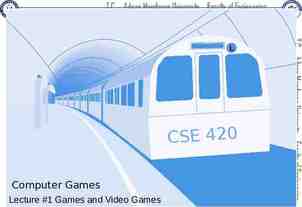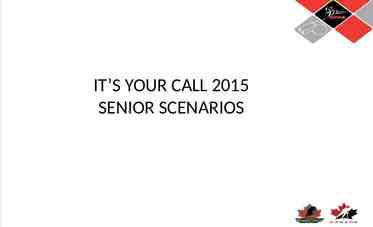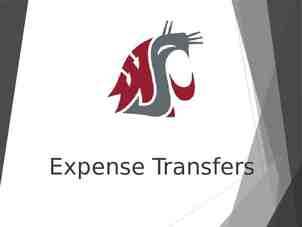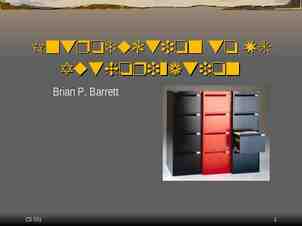Maximizing Success for WIOA Youth
20 Slides5.14 MB

Maximizing Success for WIOA Youth

Presenter Introductions Kevin Armstrong - Manager of Youth Services, DEWD Verginia Butoi Varga - LEAP Program Coordinator, CCBC Laura Finazzo - LEAP Case Management Coordinator, CCBC

What We’ll Cover Today: DEWD Youth Services Baltimore County Department of Economic and Workforce Development (DEWD) - Local Area Workforce Structure DEWD & CCBC Partnership CCBC LEAP Program Design & Outcomes Student Testimonials Q&A

Baltimore County Department of Economic & Workforce Development - Youth Services The Youth Services Program engages eligible young people between the ages of 16 and 24 who have graduated or dropped out of high school by providing valuable education, training, counseling and work-based learning opportunities. Through collaboration with a variety of organizations, schools and government agencies, we partner with efforts aimed at increasing and enhancing opportunities for teens and young adults. WIOA Out-of-School Youth (OSY) Program (WELO) Job Shadowing Summer Employment Program In-school Youth Program (ISY) considering for 2020

Baltimore County Department of Economic and Workforce Development - Local Area Workforce Structure WIOA (Section 108) requires all Local Boards to develop and submit to the Governor a comprehensive 4-year Local Plan and to make that plan available for public comment. Baltimore County’s Local Workforce Area Plan details how the local area will work to achieve WIOA’s vision of a job-driven workforce system that helps job seekers and workers access employment, education, training, and support services to succeed in the labor market and match employers with skilled workers they need to compete in the global economy.

The Workforce Development Board (WDB) is an industryled entity that provides policy guidance and oversight for Baltimore County's workforce development system. The WDB serves as the Local Workforce Investment Board (LWIB) for Baltimore County per the federal Workforce Innovation and Opportunity Act. Members of the WDB are appointed by the County Executive and represent the private sector, educational institutions, labor, community and government organizations.

DEWD’s plan aligns with the strategic goals of Maryland’s Benchmarks of Success to: Increase the earning capacity of Maryland’s workforce system customers by maximizing access to employment; Increase the earning capacity of Maryland’s workforce system customers by maximizing access to and use of skills and credentialing; Increase the earning capacity of Maryland’s workforce system customers by maximizing access to and use of life management skills; Increase the earning capacity of Maryland’s workforce system customers by eliminating barriers to employment; Strengthen and enhance the effectiveness and efficiency of Maryland’s workforce system.

Industry-Specific Approach A central focus of WIOA is the establishment of industry focused approaches in an effort to build a skilled workforce. This approach is proven to be one of the most effective ways to align service providers to meet the talent needs of employers. Through strategic alignment of education, training, and employment services, an industry-specific approach holds the promise of increasing the number of workers in Baltimore County and the region who gain the industry-recognized and academic credentials they need to work in the most in-demand occupations.

DEWD uses a data-informed approach called the Job Connector Toolkit; to align anticipated business needs and economic development strategies with the local workforce and education systems. To expand the technical and professional skills of our local workforce the Toolkit provides an overview of the economic impact that Baltimore County’s 9 targeted industries have on Skilled Trades Eds, Meds and Business Services the region. Feds Construction Education Financial Services Manufacturing Healthcare Information Technolo gy Transportation, Distri bution and Logistics Government Professional and Busi ness Services https://www.baltimorecountymd.gov/Agencies/economicdev/job-seekers/job-conn ector/toolkit.html

DEWD & CCBC Partnership DEWD solicited an RFP in 2016. Proposals were voted on by the local WDB DEWD awarded CCBC to provide Out-of-school (OSY) services DEWD provided an overview of WIOA policy and procedures (eligibility, indicators of performance, 14 service elements, etc.) The Youth Services team created a Baltimore County Technical Assistance (TA) Guide based on information pulled from the US Dept. of Labor’s Training and Employment Guidance Letters (TEGL) and policy issuances from Maryland Department of Labor (Labor). DEWD provides and recommends periodic training and professional development for CCBC staff (networking conferences, webinars, case note training, updates on policy issuances, steering committee, monitoring reports, etc.)

What is the LEAP Program? LEAP stands for Learn, Earn, Achieve, Progress The Community College of Baltimore County (CCBC) was selected by Baltimore County DEWD to provide all 14 service elements of WIOA Title 1 Youth funding Recruitment and Enrollment Process LEAP Program primarily services youth by enrolling them in cohort technical trainings Marketing Info sessions Eligibility screening Mandatory workshops, team building and assessments Service strategy enrollment meetings Submit enrollment files to DEWD for approval

What is a LEAP Cohort? LEAP Support Classes Life Management Skills Basic Financial Literacy Basic Computer Skills for Success Academic Success Applying Skills to the Workplace Technical Training Programs Certified Apartment Maintenance Tech Certified Logistics, Warehouse Distribution & Forklift Certified Nursing Assistant/Geriatric Nursing Assistant (CNA/GNA) Child Care Provider Dental Assistant Medical Front Office Patient Care Technician (PCT) Pharmacy Technician Phlebotomy Technician

LEAP Cohort Training Service Elements Education and Training Student Support Employme nt and Work Experienc es Follow Up Services *All students are assigned to a Case Manager and Employment Coordinator

Measurements of Success 1. Measurable Skills Gain 2. Employment/Education/ Training 2nd and 4th Quarter After Exit – LEAP benchmark 70% 3. Credential Attainment – at the exit or one year after exit - LEAP benchmark 70% 4. Median Income Indicator LEAP Outcomes Reports FY18 TOTAL Exit 57 Credential at exit 34 34/48* - 71% Empl/PS 2nd QT 24 22/24 - 92% Empl/PS 4th QT n/a n/a FY19 TOTAL Exit 62 Credential at exit 41 41/59* - 69% Empl/PS 2nd QT 61 61/62 - 98% Empl/PS 4th QT 37 35/37 - 94%

LEAP Program Performance Outcomes Cohorts Completed CAMT – RAC Vet Assistant – ESS Phlebotomy – ESS MFO – NP Dental – RAC CNA/GNA – ESS MFO – OM CAMT - RAC # students # students # # students successfull with students earned y employme started credential completed nt 11 10 8 10 9 7 6 7 10 7 8 4 8 8 7 6 11 6 2 9 11 6 4 4 11 10 10 8 8 8 5 5

Challenges & Lessons Learned Challenges Complexity of new legislation Trial and error with program design – GED vs. technical training Credential acceptability Dual enrollment with other local areas Add more Lessons Learned Partnership and technical support between DEWD & LEAP Internal reference documents and SOPs to implement WIOA legislation Add more

Student Testimonials & Success Stories

Questions?

Presenter Contact Info Kevin Armstrong – Manager of Youth Services, DEWD 410-887-4004 [email protected] Verginia Butoi Varga - LEAP Program Coordinator, CCBC 443-840-1610 [email protected] Laura Finazzo - LEAP Case Management Coordinator, CCBC 443-844-0105 [email protected]







